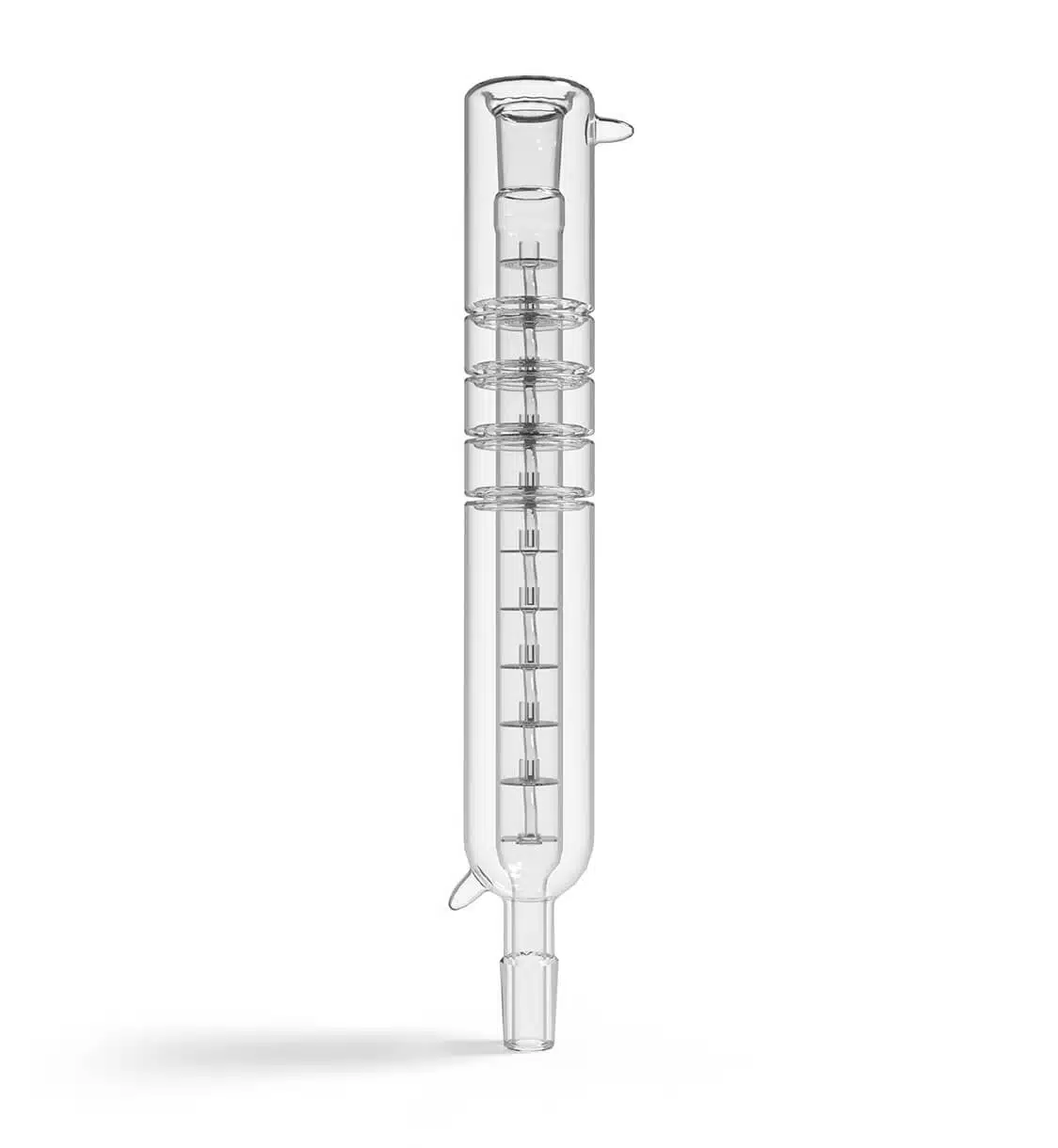Oldershaw columns
Precise separation for laboratory distillation
The Oldershaw column is a specialized fractional distillation column for laboratory-scale operations. Its design, featuring a series of perforated plates, allows for superior separation of liquid mixtures.
Enhanced efficiency
Design incorporates a vacuum jacket to minimize heat loss and perforated plates to promote efficient heat and mass transfer, leading to superior separation.
Precise control
Stepwise separation process allows for precise control over temperature and pressure, crucial for accurate and reproducible results.
Laboratory-scale
Compact design ideal for labs with limited space.

FAQs
What is an Oldershaw column?
An Oldershaw column is a specialized type of distillation column designed for laboratory use. It features a vacuum-jacketed design with perforated plates, enhancing its efficiency and precision for separation processes.
What is an Oldershaw column used for?
- Simulating chemical processes to evaluate the feasibility of separation by distillation.
- Determining the efficiency of separation in scaled-up processes.
- Conducting research on distillation techniques and parameters.
Why use an Oldershaw column?
There are several advantages to using an Oldershaw column:
- Enhanced efficiency: The vacuum jacket and perforated plates promote efficient heat and mass transfer, resulting in better separation.
- Precise control: The design allows for precise control of temperature and pressure, ensuring accurate results.
- Laboratory-scale: Ideal for research and development due to its smaller size and ease of use.
How does an Oldershaw column work?
An Oldershaw column works by creating a counter-current flow of vapor and liquid. The vapor rises through the column while the liquid flows down, coming into contact with each other on the perforated plates. The components with lower boiling points vaporize first and rise higher in the column, while those with higher boiling points remain in the liquid phase and flow downwards.
Technical specifications
H.S. Martin oldershaw columns are designed and manufactured with the following specifications.
Material
High-quality borosilicate glass, known for durability and resistance to thermal shock (Pyrex® or Kimax®)
Design
Series of uniform perforated plates or trays that create discrete stages for vapor-liquid interaction. Vacuum-jacketed design to minimize heat loss and ensure a stable temperature gradient.
Application scale
Laboratory and pilot-scale
Annealing point
560°C (Pyrex®), 565°C (Kimax®)
Strain point
510°C (Pyrex®), 513°C (Kimax®)
Softening point
821°C (Pyrex®), 827°C (Kimax®)
Thermal expansion coefficient (0-300°C)
33 x 10-7 l/°C (Pyrex®), 32 x 10-7 l/°C (Kimax®)
Joint type
Standard taper joints, spherical ground joints
Available joint sizes
A range of sizes, including 24/40, 29/42, 34/45, etc.
Why choose H.S. Martin for Oldershaw columns?
H.S. Martin is a trusted provider of high-quality scientific glassware. Our Oldershaw columns are meticulously crafted from top-grade borosilicate glass, ensuring optimal functionality and longevity. We offer a range of sizes and configurations to meet your specific needs.
When you choose H.S. Martin for your Oldershaw columns, you’re investing in:
- Quality and precision
- Customization options
- Expert support
- Durability and longevity
We're here to help
We are experts in customization. If you don't find what you're looking for, or have any questions at all, just get in touch.